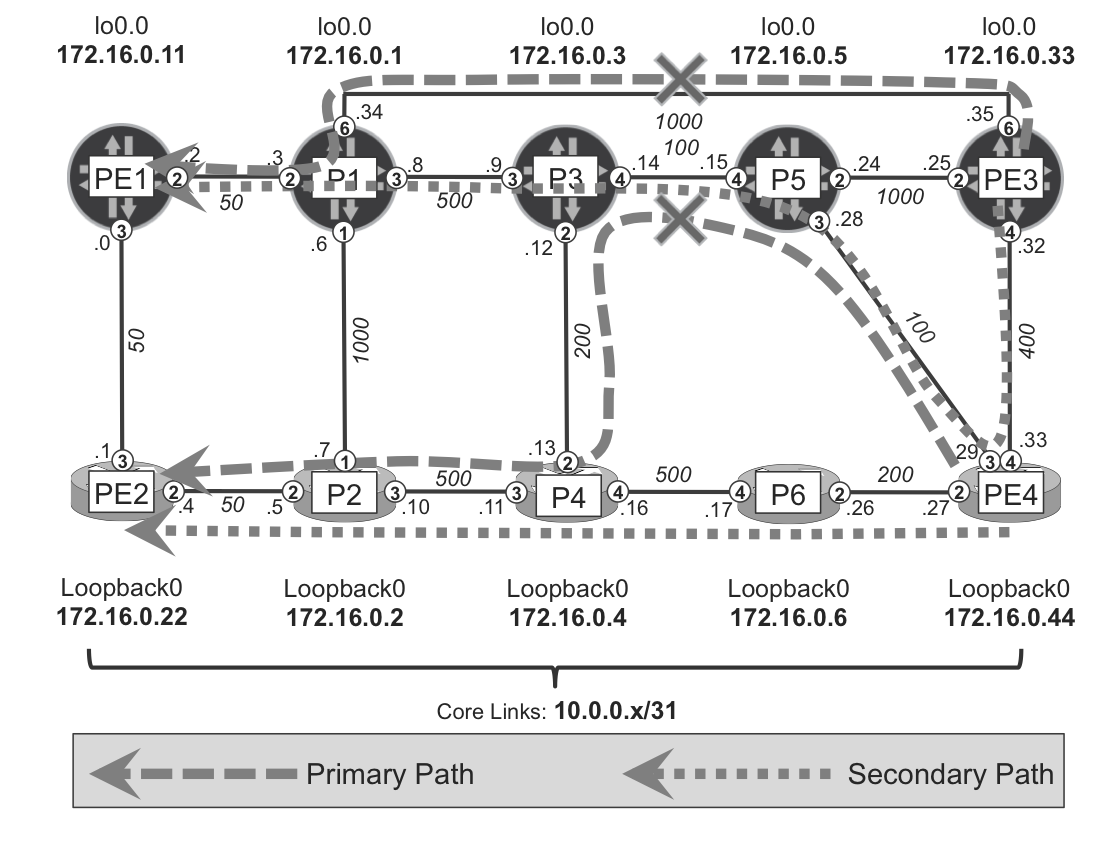Chapter 19. Transit Fast Restoration Based on RSVP-TE
Until now, the discussion has been about various IP Fast ReRoute (FRR) protection techniques. Let’s focus now on protection in RSVP-TE. As in the previous cases, there are a variety of options to provide protection with RSVP transport, just not as many:
-
Path protection
-
Facility protection (RFC 4090, Section 3.2)
-
One-to-one protection (RFC 4090, Section 3.1)
These options are discussed in the three sections of this chapter.
RSVP-TE Path Protection
The concept of path protection is very simple: for each RSVP LSP that requires path protection, an operator defines two (or more) paths. During normal conditions, the primary path is used to forward the traffic for any given LSP. If some failure on the primary path happens, the head-end router can switch the traffic to the secondary path, as illustrated in Figure 19-1.
You can see that the LSP from PE3 to PE1 is configured with two path options. The primary path uses the PE3→P1→PE1 route, whereas the secondary path uses the PE3→PE4→P5→P3→P1→PE1 route. A simple configuration to achieve these desired results is presented Example 19-1.

Figure 19-1. RSVP path protection concepts
Example 19-1. RSVP multiple path configuration on PE3 (Junos)
protocols { mpls { label-switched-path PE3--->PE1 { to 172.16.0.11; primary PE3-P1-PE1; secondary PE3-PE4-P5-P3-P1-PE1; } path PE3-P1-PE1 ...Get MPLS in the SDN Era now with the O’Reilly learning platform.
O’Reilly members experience books, live events, courses curated by job role, and more from O’Reilly and nearly 200 top publishers.

